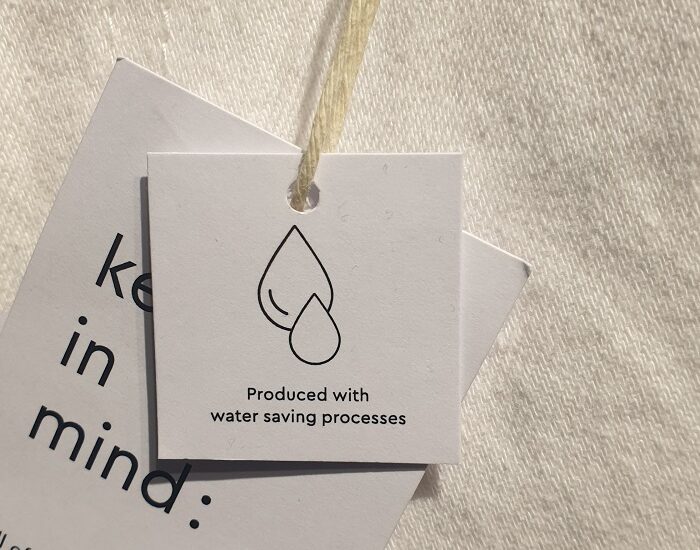As the awareness about the environmental impact of fashion grows, many conventional brands have rushed to launch “eco” or “green” collections to capitalize on this trend. But what makes a brand genuinely sustainable rather than merely engaging in greenwashing? Let me break down the key differences between authentic sustainable brands and conventional companies with token eco-friendly lines.
Holistic Sustainability vs. Isolated Collections
Truly sustainable brands integrate environmental and ethical considerations into their entire business model. Unlike conventional brands that may offer a small “green” capsule collection while continuing environmentally harmful practices across their main lines, sustainable brands make responsible choices at every level of operation.
Material Selection
Sustainable brands source materials that have minimal environmental impact throughout their lifecycle. They prioritize organic, recycled, or innovative materials like Tencel, recycled polyester, or biodegradable alternatives. Their material choices reflect a consideration of the full ecological footprint from raw material to end-of-life. When using animal-derived materials like wool, they ensure these come from recycled sources to minimize environmental impact and ethical concerns.
In contrast, conventional brands with “eco” collections may use marginally better materials only in select products while maintaining problematic practices elsewhere. They often focus on a single sustainable aspect while ignoring others, such as using organic cotton but applying toxic dyes in the manufacturing process. These brands typically continue using predominantly virgin synthetic materials across their main collections, contributing to ongoing environmental degradation.
Production Processes
Sustainable brands implement water-saving techniques and closed-loop water systems throughout their manufacturing. They power their operations with renewable energy and minimize chemical use or switch to non-toxic alternatives. These brands consider their carbon footprint across the entire supply chain and actively work to reduce emissions at every stage of production.
Conventional brands with “green” collections typically implement minor environmental improvements in limited production lines while maintaining energy-intensive and polluting manufacturing for most products. They rarely address their overall carbon footprint comprehensively, instead highlighting isolated improvements while continuing practices that contribute significantly to climate change.
Labor Practices
Sustainable brands ensure fair wages and safe working conditions throughout their supply chain. They maintain transparent relationships with factories and suppliers, often working with local artisans or small-scale production facilities. These brands can trace their entire production process and willingly share this information with consumers who want to know who made their clothes and under what conditions.
Conventional brands with “eco” lines may highlight ethical practices in select collections while maintaining problematic labor conditions elsewhere in their supply chain. They often lack transparency about manufacturing locations and working conditions, making it difficult for consumers to verify their claims. Many continue to outsource to the lowest bidder regardless of labor standards, prioritizing profit margins over worker wellbeing.
Product Lifecycle
Sustainable brands design for longevity rather than planned obsolescence, creating timeless styles that transcend fast-changing trends. They often offer repair services or take-back programs to extend product life and take responsibility for what happens at the end of a product’s useful life. Their design philosophy centers around creating lasting value rather than disposable items.
Conventional brands with “green” marketing continue pushing rapid trend cycles even in their supposedly “sustainable” collections, encouraging unnecessary consumption. They rarely address what happens to products after consumer use, taking little responsibility for the waste generated by their business model. Their primary design focus remains quick sales rather than durability, contradicting fundamental sustainability principles.
Transparent Business Practices
Sustainable brands provide detailed information about sourcing, manufacturing, and environmental impact. They often pursue third-party certifications such as B Corp, GOTS, or Oeko-Tex to validate their claims. These brands share both achievements and challenges openly with consumers, setting measurable sustainability goals and regularly reporting on their progress toward meeting them.
Conventional brands with “eco” marketing use vague terms like “eco-friendly” or “natural” without specific definitions or standards. They rarely disclose their full environmental impact, instead highlighting minor improvements while obscuring larger issues. Many lack meaningful third-party verification of their claims, asking consumers to trust marketing materials rather than providing concrete evidence of sustainable practices.
Pricing and Growth Models
Sustainable brands price their products to reflect true production costs and fair labor practices. They typically operate on slower growth models that prioritize quality over quantity, often producing in smaller batches to minimize waste and resource consumption. Their business model acknowledges the fundamental limits of operating on a finite planet.
Conventional brands with “green” collections continue pursuing aggressive growth targets that are fundamentally incompatible with sustainability. They maintain artificially low prices that necessitate cutting corners somewhere in the production process. Many produce excessive inventory leading to waste and markdowns, creating environmental problems even with supposedly “eco-friendly” products.
Final Thoughts
When considering whether a brand is truly sustainable rather than simply greenwashing, look beyond marketing messages and examine their comprehensive approach. A genuinely sustainable brand demonstrates commitment through consistent actions across their entire business, not just in isolated collections designed to capture the conscious consumer market.
As you explore sustainable fashion labels, look for those making authentic commitments to both people and planet like the ones in my brand directory. True sustainability isn’t a marketing strategy, it’s a fundamental business philosophy that shapes every decision from design to delivery.

